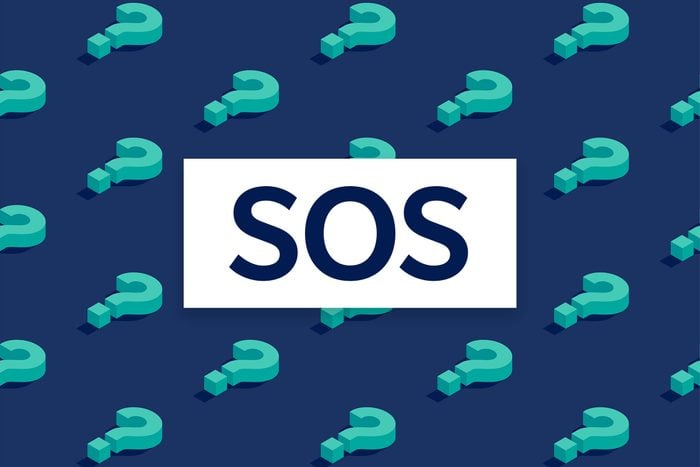What SOS Stands For and Where It Came From
Updated: Jun. 18, 2021

Nope, it's not "save our ship." Not even close.
“Save Our Ship!”
“Save Our Souls!”
“Save On Socks (at Sal’s Irregular Sock Emporium)!”
Technically “SOS,” doesn’t officially stand for any of these phrases. It’s the international abbreviation for distress—not to be confused with an acronym (see acronym vs. abbreviation for the difference and maybe brush up on some acronym examples for more clarity.) Best known for its appearances in desert island cartoons, maritime movies, and earworms by ABBA and Rihanna, the letters SOS have been used as a code for emergency since 1905. But what is the SOS meaning, actually? The answer, dear readers, is nothing—and that’s exactly why it’s important.
Where does the term SOS come from?
Unlike WD-40, CVS, and TASER, SOS is not even an acronym: It’s a Morse code sequence, deliberately introduced by the German government in a 1905 set of radio regulations to stand out from less important telegraph transmissions. Translated to Morse code, SOS looks like this:
“. . . – – – . . .”
Three dots, three dashes, three dots. At a time when international ships increasingly filled the seas, and Morse code was the only way to communicate instantaneously between them, vessels needed a quick and unmistakable way to signal that trouble was afoot. At first, different nations used different codes. Britain, for example, favored CQD; as the Titanic sank into the ocean in April 1912, it broadcast a mix of CQD and SOS calls (the resulting confusion helped take CQD out of use for good).
RELATED: Titanic Survivors: What Happened to Them Next
The sequence of triplet dots and dashes proposed by the German government soon became the international favorite for its elegant simplicity. Transmitted without pause and repeated every few seconds, the SOS meaning was unmistakable, specifically because it didn’t form any known word or abbreviation.
There was also a visual appeal. While the same series of dots and dashes could also just as easily translate to the Morse code sequences for VTB, SMB, and others, SOS had an instantly recognizable symmetry. Not only is SOS a palindrome word (a word that reads the same backward and forwards, like civic, deified, etc.,) it’s also an ambigram, a word that looks identical whether read upside-down or right-side-up. When carved into a snowbank, say, or spelled out in boulders on a beach, SOS still looks like SOS no matter which way the rescue chopper approaches.
RELATED: Portmanteau Words
Why was SOS chosen as a distress signal?
By 1908, the triple dot-dash-dot code became the official international radio distress signal and remained that way until 1999, when Morse code was declared all but dead. Today, a ship can signal distress with the touch of a button, the lift of a phone, or a call over radio waves, but the SOS message will likely continue to endure as a backup distress call.
Now that you know the SOS meaning, keep the knowledge coming in and learn why pounds is abbreviated to lbs.
Sources:
- BBC News: “Titanic: The final messages from a stricken ship”


